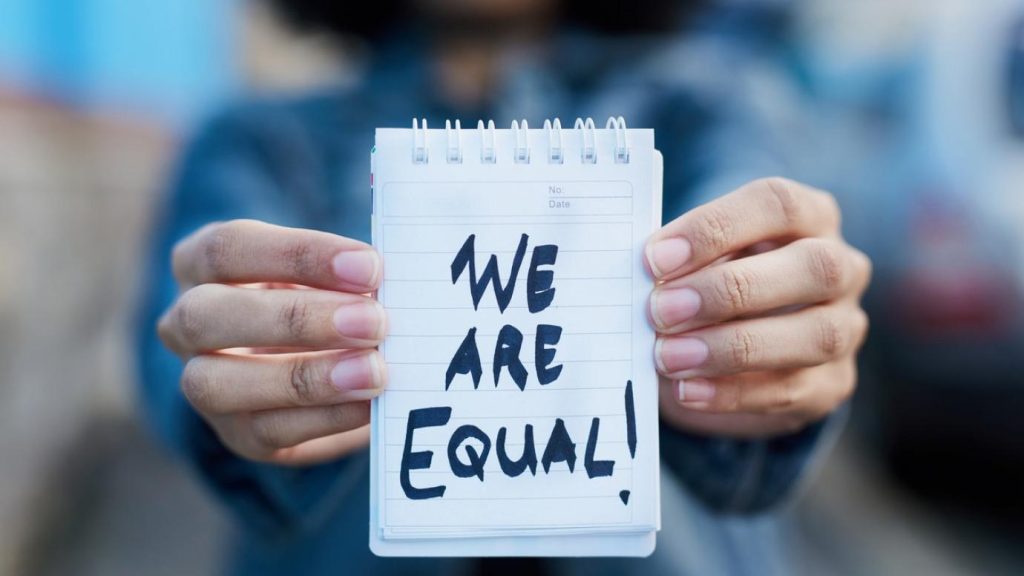Understanding the Gender Gap in the Workplace
Achieving gender equality in the workplace is not just an option but a necessity. The gender gap is a serious issue that must be addressed with urgency. The unequal treatment of in terms of pay and leadership roles cannot be allowed to persist any longer. Despite some progress in recent years, organizations must take bold and decisive actions to promote gender equality at work. It is time to implement effective strategies and hold ourselves accountable for creating a fair and empowering workplace for all.
Despite all of the social advances in women’s rights and the push for gender equality in the workplace, it seems like modern man still wants women that they can take care of at home ~SHANNON MULLEN.
Breaking Down the Gender Pay Gap
The gender pay gap is a significant contributor to the overall gender gap in the workplace. This gap refers to the difference in pay between people of all genders for doing the same job or jobs of equal value. The gap persists despite efforts to address this issue, such as implementing similar pay laws. Organizations must conduct regular pay audits and take necessary steps to close the gap. This includes eliminating any biases in hiring and promotion processes and providing training and support for women to negotiate their salaries. By working together, we can break down the gender pay gap and create a more equitable workplace for all.
Women in Leadership: Overcoming Barriers
Women in leadership positions face various challenges and barriers that prevent them from advancing in their careers. These barriers include gender stereotypes, lack of access to networking opportunities, and unconscious biases. Organizations must proactively address these issues and create pathways for women to lead. This includes providing training and mentorship programs, offering flexible work arrangements, and promoting diversity and inclusion at all levels of the organization. By breaking down these barriers, we can create a workplace where women have equal opportunities to succeed and thrive in leadership roles.
Workplace Discrimination: Recognizing and Addressing Bias
Workplace discrimination is a serious issue that affects many individuals and can harm their mental and emotional well-being. Discrimination can take many forms, including bias based on gender, race, age, and sexual orientation. Organizations need to recognize and address bias in the workplace to create a fair and inclusive environment for all employees. This can be achieved through diversity and inclusion training, developing policies and procedures that promote fairness and equality, and addressing any incidents of discrimination or bias promptly and effectively. By taking these actions, we can create a workplace that values and respects all individuals, regardless of their background or identity.
Inclusivity Initiatives: Building a Diverse Workforce
Building a diverse workforce promotes inclusivity and creates a workplace that values different perspectives and experiences. Inclusivity initiatives can take many forms, including recruiting from a vast pool of candidates, training on cultural competence and sensitivity, and creating employee resource groups for underrepresented groups. By actively promoting workplace diversity and inclusion, organizations can build a more robust and innovative workforce better equipped to meet the needs of a diverse customer base.

Strategies for Achieving Gender Equality
To achieve gender equality at work, organizations must take a multi-faceted approach. This involves implementing various strategies that address the various challenges women face in the workplace. Some effective gender equity strategies include conducting regular pay audits, providing training and mentorship programs. Promoting diversity and inclusion, and creating policies and procedures that promote fairness and equality. Additionally, organizations must hold themselves accountable for creating a fair, inclusive, and empowering workplace for all employees. By taking these actions, we can work towards achieving gender equality. We create a workplace that values and respects all individuals.
A gender-equal society would be one where the word “gender” does not exist: where everyone can be themselves ~GLORIA STEINEM.
Mentorship and Sponsorship Programs
Mentorship and sponsorship programs are essential for promoting gender equality in the workplace. These programs provide women with the support, guidance, and opportunities. And they need to advance in their careers and overcome the barriers they may face. Mentorship programs pair women with experienced professionals who can provide them with advice, feedback, and networking opportunities. Sponsorship programs go one step further by actively advocating for women and promoting their career advancement. By implementing these programs, organizations can create a more supportive and empowering workplace for women and achieve greater gender equality.
Empowering Women: Leadership Development Programs
Empowering women through leadership development programs is crucial to achieving gender equality in the workplace. These programs provide women with the skills, knowledge, and confidence they need to advance in their careers and take on leadership roles. Leadership development programs can take many forms, including workshops, training sessions, and coaching programs. These programs can help women leadership to develop essential skills such as communication, decision-making, and strategic thinking. By investing in leadership development programs for women, organizations can create a more diverse and inclusive workplace where everyone has an equal opportunity to reach their full potential.
Success Stories: Companies Paving the Way for Gender Equality
When it comes to promoting gender balance, several companies are leading the way. By implementing policies and practices that support women in the workplace, these companies have demonstrated that creating a more inclusive and diverse environment is possible. From offering flexible work options to providing leadership development programs for women, these companies are setting an example for others to follow. By sharing their success stories, these companies are not only inspiring others but also helping pave the way for a more equal future.
Here are some companies that are paving the way for gender equality:
- Salesforce
- Accenture
- Unilever
- IBM
- Microsoft
- Procter & Gamble
- General Motors
- Intel
- Deloitte
- Johnson & Johnson
- These companies are committed to promoting gender equality in the workplace and are taking bold actions to eliminate gender bias and create a more inclusive workplace culture.

